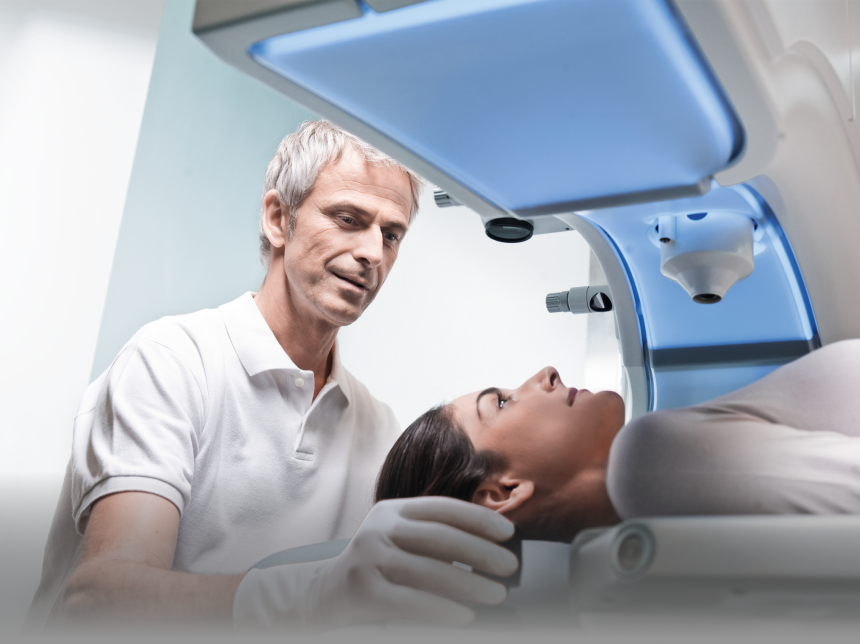SMILE stands for an innovative laser eye surgery technique. Utilizing the femtosecond laser, this procedure addresses myopia (near-sightedness) with or without astigmatism using a minimally invasive, flapless, and bladeless approach. The goal of the SMILE procedure is to eliminate or minimize reliance on glasses or contact lenses.

For the majority of patients, once you're on the treatment table and ready, the entire procedure typically lasts 4 to 5 minutes per eye on average, encompassing the removal of the lenticule. Your vision should stabilize within a few weeks following the SMILE procedure.
SMILE, a procedure characterized by minimal invasiveness and the absence of flaps or blades, is intended to treat near-sightedness with or without astigmatism. The surgeon forms a small opening of about 4-6 mm. In contrast, LASIK requires the creation of a flap to access the cornea, which could lead to complications if dislocated.
SMILE is a minimally invasive procedure without flaps or blades, with a small opening typically around 4-6 mm in size.
Anticipate your vision to settle within a few weeks after undergoing the SMILE procedure. Consult your doctor for specific instructions and timings.
Unlike femtosecond LASIK, SMILE causes minimal disruption to corneal nerves, potentially leading to a reduction in post-operative dry eye symptoms.
SMILE, a procedure characterized by minimal invasiveness and the absence of flaps or blades, is intended to treat near-sightedness with or without astigmatism. The surgeon forms a small opening of about 4-6 mm. In contrast, LASIK requires the creation of a flap to access the cornea, which could lead to complications if dislocated.
SMILE is a minimally invasive procedure without flaps or blades, with a small opening typically around 4-6 mm in size.
Anticipate your vision to settle within a few weeks after undergoing the SMILE procedure. Consult your doctor for specific instructions and timings.
Unlike femtosecond LASIK, SMILE causes minimal disruption to corneal nerves, potentially leading to a reduction in post-operative dry eye symptoms.


On average, the laser phase typically lasts 30 seconds or less. For the majority of individuals, once positioned on the treatment table, the entire process, inclusive of the extraction of the corneal tissue, generally spans 10 to 20 minutes. Preceding the procedure, the physician will apply numbing drops to your eye and may provide a mild sedative for relaxation during the process, ensuring your ease. Throughout the surgery, the SMILE laser system addresses your refractive error by modifying the corneal shape. This method transforms your cornea by generating a lenticule, a contact lens-shaped layer, which is then eliminated through a small opening.

Astigmatism is a prevalent condition, resulting in blurry vision that may induce headaches and eye strain. It frequently coexists with other vision issues like farsightedness or nearsightedness. Consult with your doctor to determine if SMILE is a suitable option for your situation.
Like any surgical intervention, you may encounter side effects post-surgery. Nonetheless, SMILE is crafted to be exceptionally minimally invasive. In contrast to alternative laser eye correction methods, the procedure involves creating only a small opening in your cornea, with the upper layers of the cornea remaining largely untouched. It is advisable to consult your doctor regarding potential side effects, encompassing disorders of the cornea, retina, and other ocular components, as well as potential visual disturbances or impairments and ocular discomfort.
Your surgeon will employ cutting-edge medical technology during your vision correction procedure. The VisuMax system houses a femtosecond laser generating rapid and brief pulses from the infrared laser. Each laser pulse delivers a highly precise burst of light, minimizing the risk of damage to adjacent healthy tissue that needs to remain untouched.
To facilitate the surgeon's task effectively, the VisuMax incorporates top-tier microscopes, digital cameras, sophisticated interactive touch screens, and integrated illumination.
While it may take a few weeks for your vision to fully stabilize, you might notice improvements shortly after the surgery. It's crucial to refrain from rubbing your eye and adhere to your doctor's instructions regarding post-operative medications and any restrictions. Throughout the healing phase, you may experience minor discomfort, like a sensation of a foreign body or occasional blurry vision as your eye heals. Be sure to consult with your doctor for personalized instructions on your recovery process.